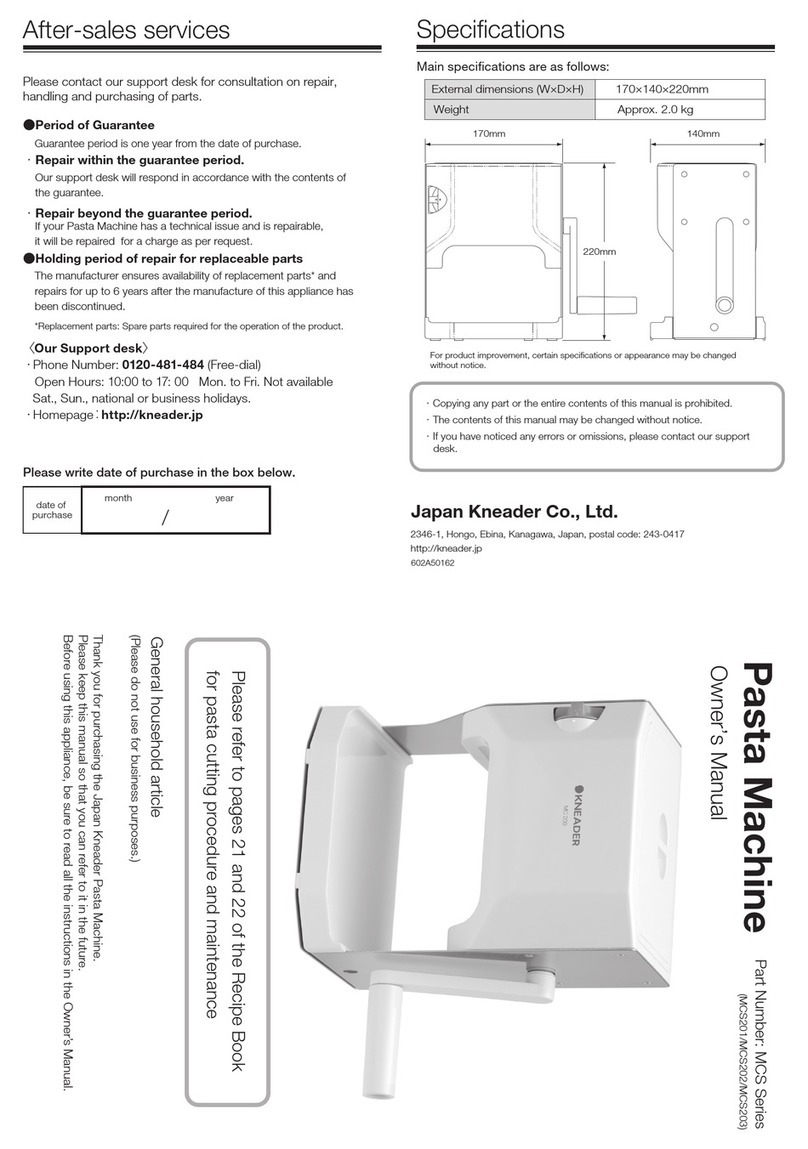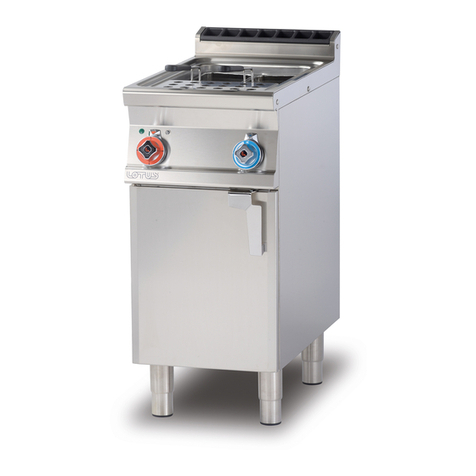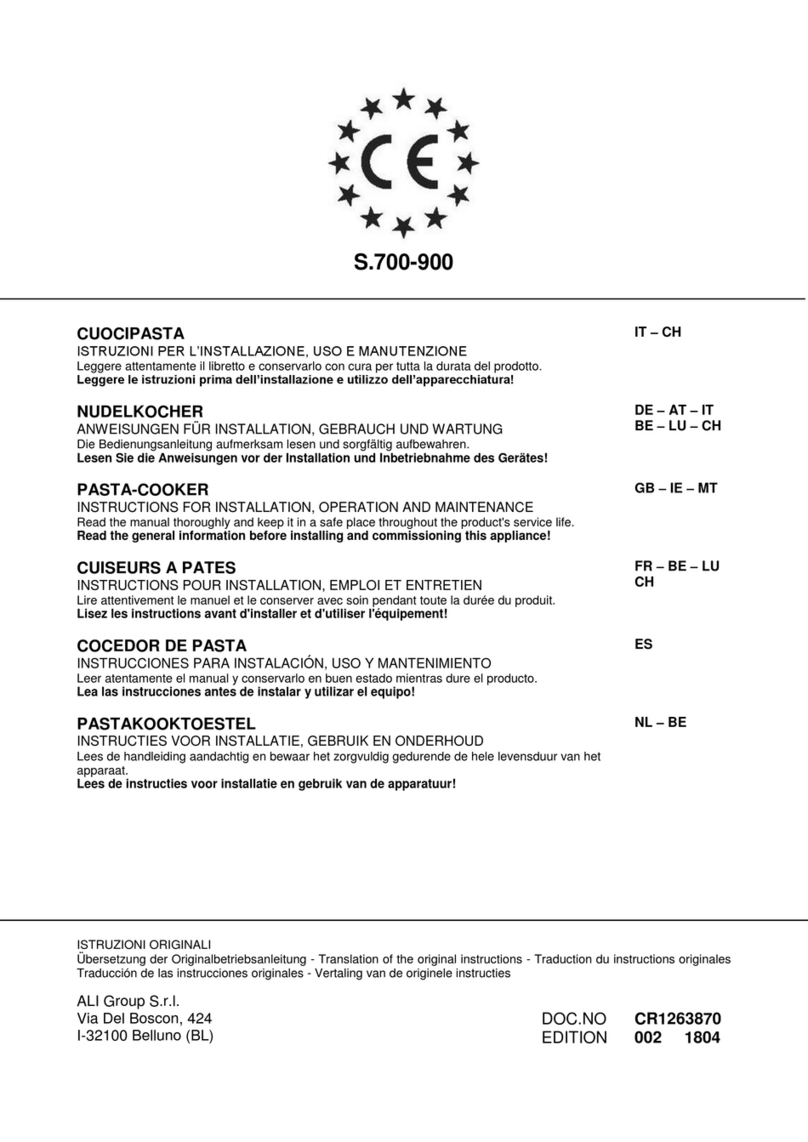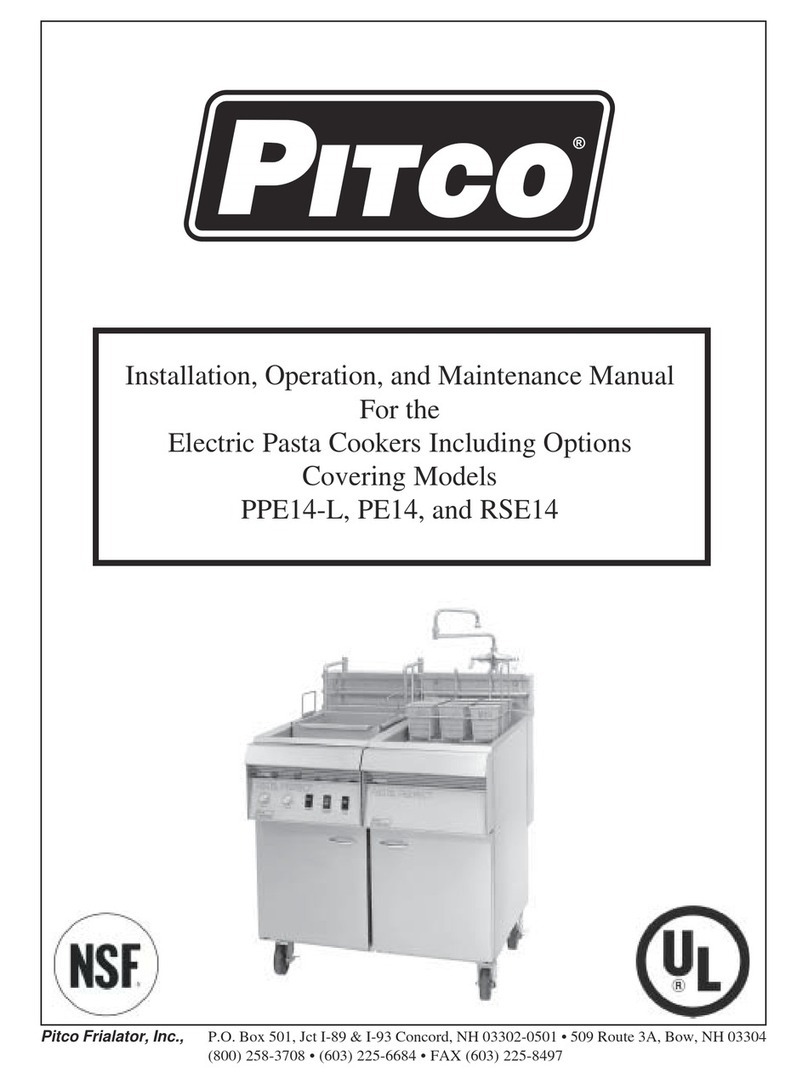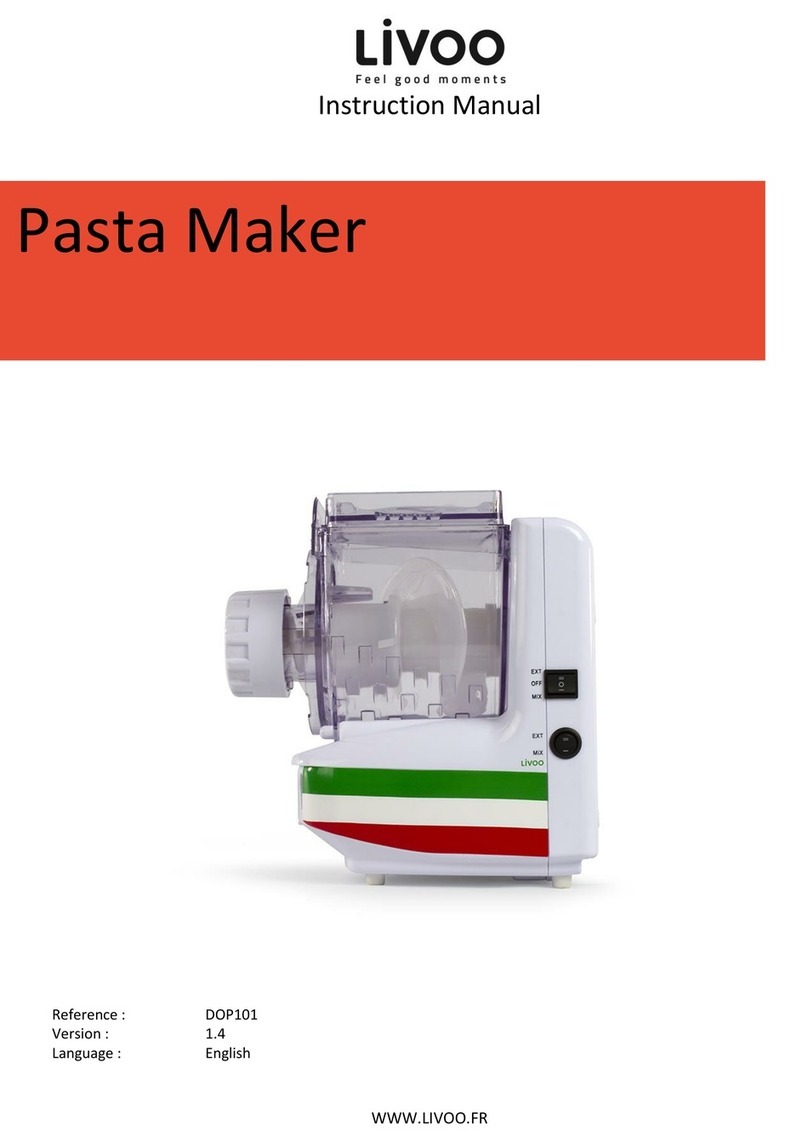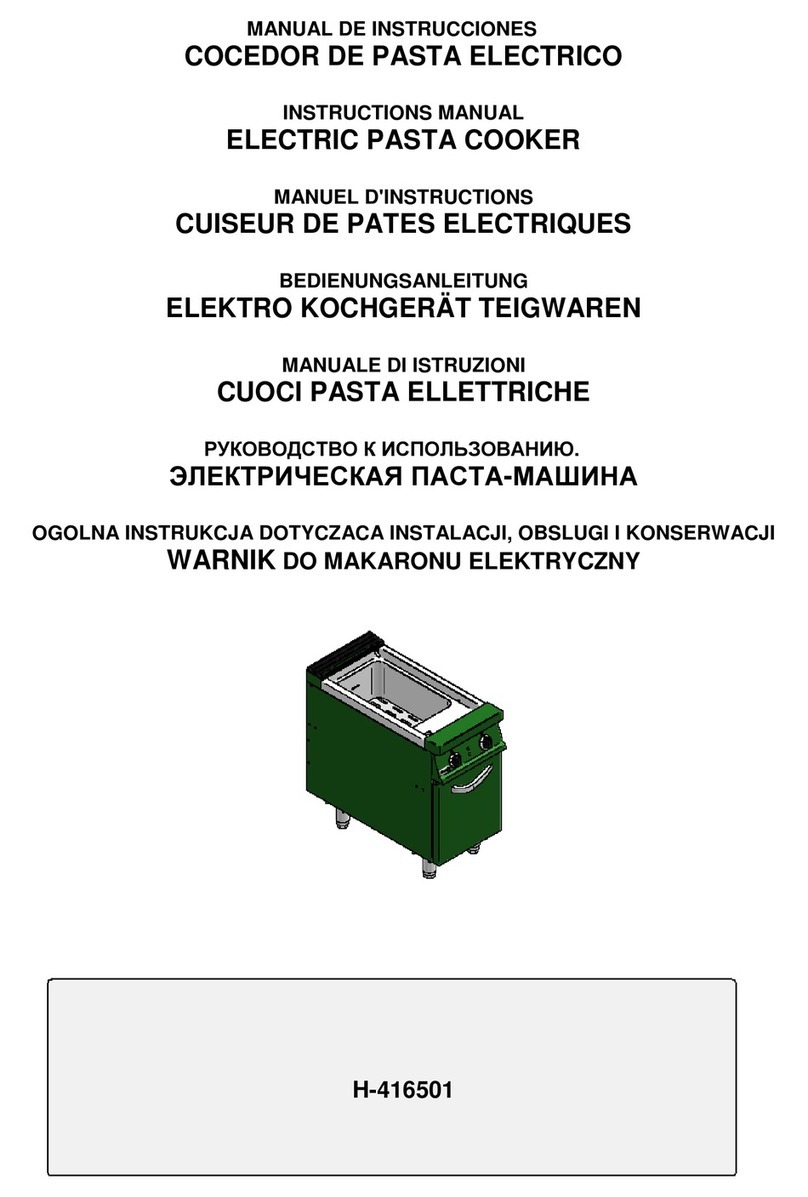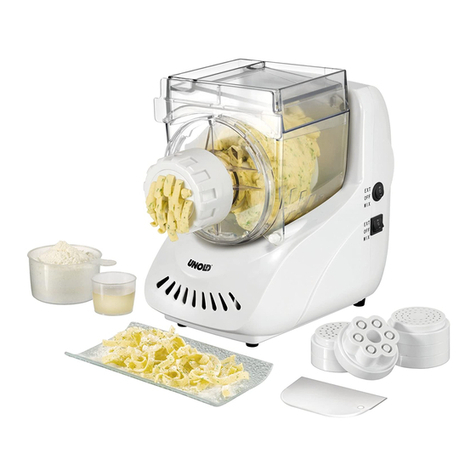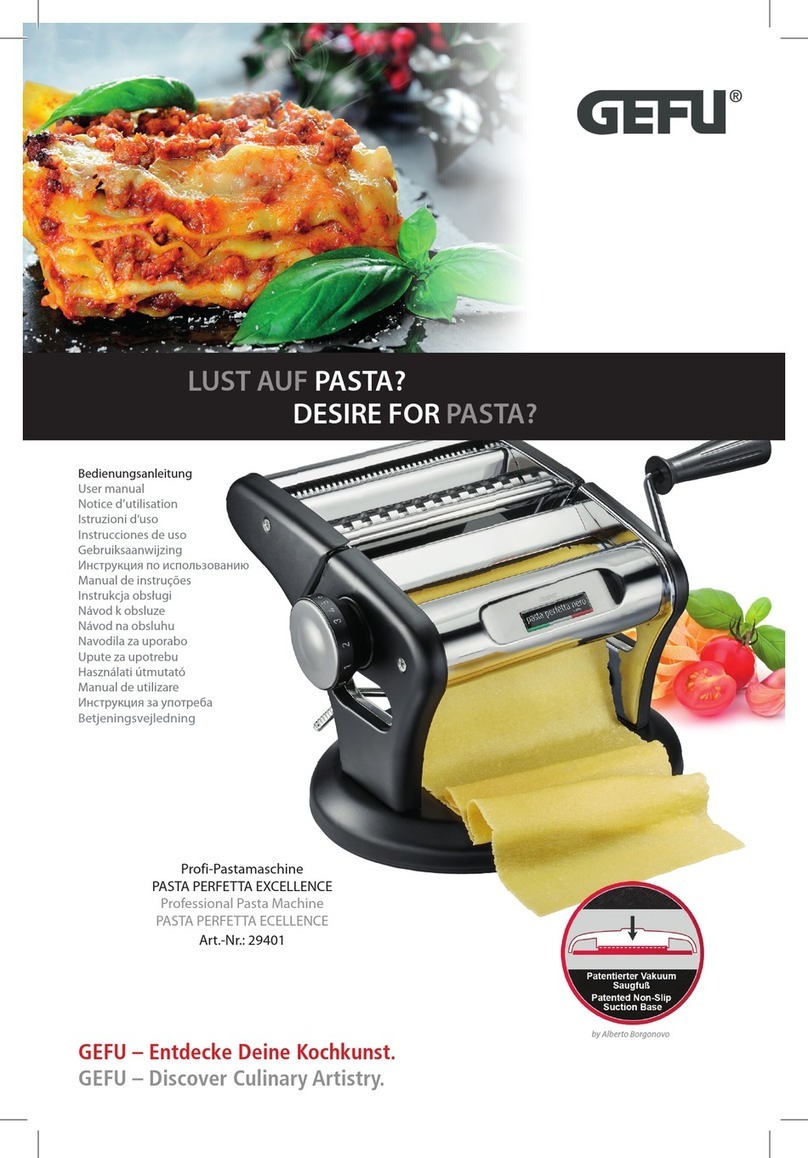before using your Kenwood
appliance
●Read these instructions carefully and
retain for future reference.
●Remove all packaging and any
labels.
safety
●Pasta mix made too dry or fed
through too quickly can break your
pasta maker and/or machine.
●Do not place your fingers or any
other item, except the
spanner/pusher supplied, down the
feed tube.
●Only use the spanner/pusher handle
to push dough down the feed tube.
And don’t push too hard.
●Never attach or remove the pasta
maker whilst the machine is in
operation.
●Feed the dough small amounts at a
time and at a steady rate. Don’t
allow the feed tube to fill up.
●Take care when handling or cleaning
as the cutting assembly blade will be
sharp.
●Always unplug:
●●before fitting or removing parts
●●after use
●●before cleaning.
●Ensure the attachment is secured in
position before switching on.
●To avoid electric shocks, never let
the power unit, cord or plug get wet.
●Never use a damaged machine. Get
it checked or repaired: see ‘Service’.
●Never use an unauthorised
attachment.
●Never let the cord hang down where
a child could grab it.
●This appliance is not intended for
use by persons (including children)
with reduced physical, sensory or
mental capabilities, or lack of
experience and knowledge, unless
they have been given supervision or
instruction concerning use of the
appliance by a person responsible
for their safety.
●Children should be supervised to
ensure that they do not play with the
appliance.
●Only use the appliance for its
intended domestic use. Kenwood
will not accept any liability if the
appliance is subject to improper use,
or failure to comply with these
instructions.
before plugging in
●Make sure your electricity supply is
the same as the one shown on the
underside of your machine.
Important – UK only
●The wires in the cord are coloured
as follows:
Blue = Neutral,
Brown = Live.
●The appliance must be protected by
a 3A approved (BS1362) fuse.
Note:
●For non-rewireable plugs the fuse
cover MUST be refitted when
replacing the fuse. If the fuse cover
is lost then the plug must not be
used until a replacement can be
obtained. The correct fuse cover is
identified by colour and a
replacement may be obtained from
your Kenwood Authorised Repairer
(see Service).
●If a non-rewireable plug is cut off it
must be DESTROYED
IMMEDIATELY. An electric shock
hazard may arise if an unwanted
non-rewireable plug is inadvertently
inserted into a 13A socket outlet.
●This appliance conforms to EC
directive 2004/108/EC on
Electromagnetic Compatibility and
EC regulation no. 1935/2004 of
27/10/2004 on materials intended
for contact with food.
before using for the first time
1Wash the parts: see ‘cleaning’.
English
2




